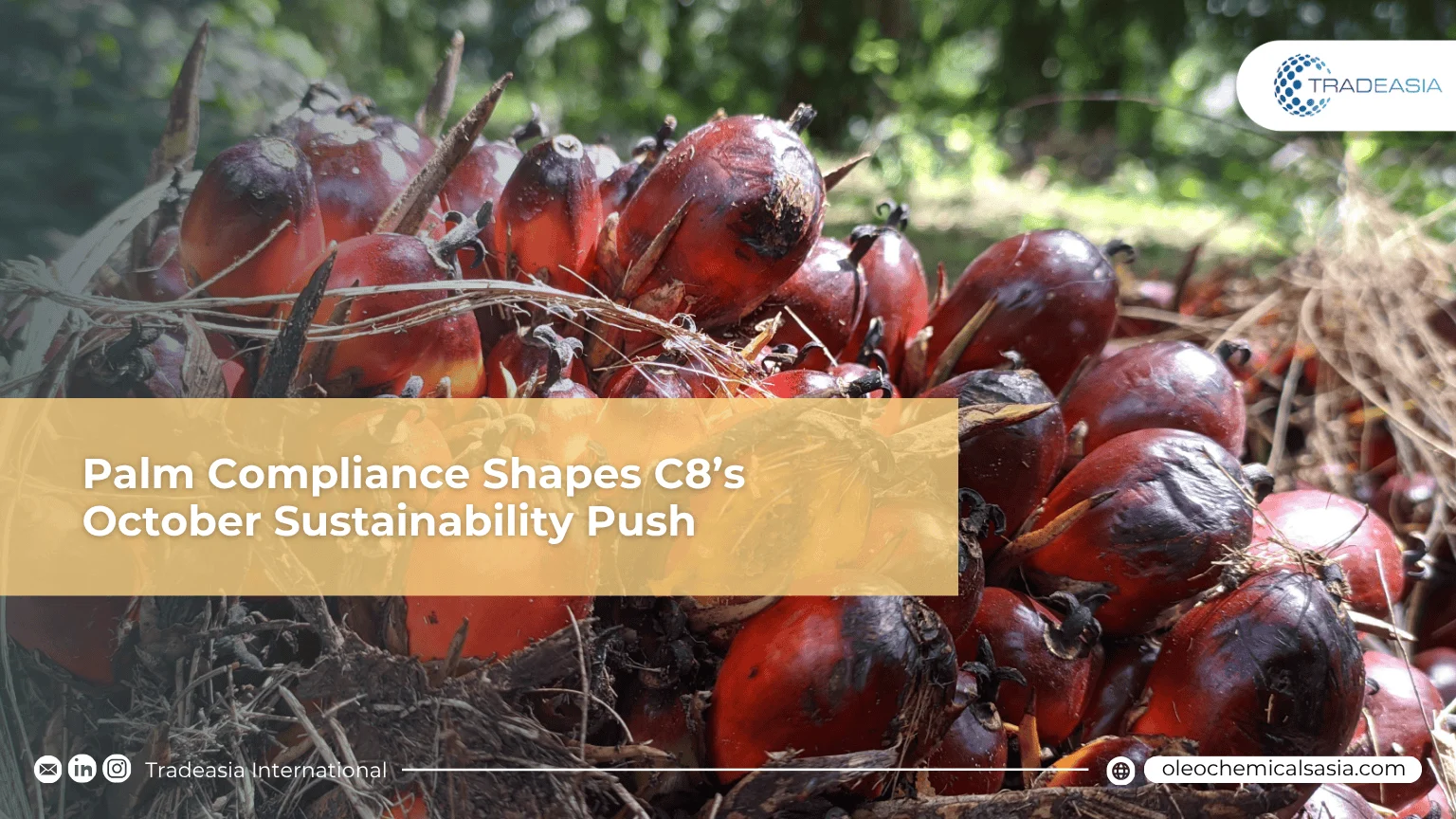Tracing C8: Compliance and Competition Define October’s Palm Sustainability Agenda

Table of Content
- Mandating Transparency: Navigating the EUDR Horizon
- Operational Excellence: C8's Low-Carbon Future
For the palm and oleochemical industry, October was a month of intense operational reviews driven by global sustainability mandates and fierce competition for raw materials. Methyl Caprylate (C8), a derivative requiring premium feedstock, sat at the intersection of these two critical pressures. This pressure point necessitates transparency and verifiable sourcing from suppliers.
In this era of heightened environmental scrutiny, the value of a palm ester derivative is increasingly tied to the integrity of its source. Tradeasia International excels in navigating these complex requirements, understanding that being a reliable supplier means guaranteeing traceability alongside volume, ensuring the quality you receive is matched by the sustainability standards you demand. Our deep commitment to certified palm sourcing provides stability in a turbulent market.
Mandating Transparency: Navigating the EUDR Horizon
Regulatory developments in October highlighted the non-negotiable nature of supply chain transparency. Discussions around the EU Deforestation Regulation (EUDR) underscored the risk of retroactive invalidation, demanding that C8 suppliers have robust, real-time due diligence systems in place (Source: Argus Media). This is a significant undertaking for a market where Asia Pacific commands nearly 49% of the global oleochemical share (Source: Fortune Business Insights). Simultaneously, the industry grappled with the proposed 1% increase in the Coco-Methyl Ester (CME) biodiesel mandate scheduled for October. This mandate, by diverting C8-rich feedstock (like coconut/palm kernel oil) towards energy, threatened to create scarcity and price pressure for oleochemical buyers (Source: PCA/Industry News).
Operational Excellence: C8's Low-Carbon Future
The industry is responding to these pressures with innovative operational changes. A key example that gained traction in October was the high-profile announcement by Unilever Oleochemical Indonesia (UOI) to switch to biomethane generated from palm oil effluent, a waste product, to power its facility (Source: Unilever). This pioneering move supports Unilever’s commitment to achieving a 100% reduction in Scope 1 and 2 emissions by 2030, demonstrating how sustainable operational shifts directly benefit the environmental profile of derivatives like C8. October confirmed that sustainable sourcing and resource allocation are now the defining metrics for competitive advantage in the palm derivatives trade.
Sources:
-
Unilever: Five ways Unilever's taking focused, urgent and systemic climate action (https://www.unilever-arabia.com/news/2025/five-ways-unilevers-taking-focused-urgent-and-systemic-climate-action/)
-
PCA: PCA in Urgent Talks to Curb Surge in CNO, Coconut Products Prices (https://www.pca.gov.ph/index.php/10-news/521-pca-in-urgent-talks-to-curb-surge-in-cno-coconut-products-prices)
-
Oleochemicals Asia: Global Market Insights for Palm Derivatives (https://www.oleochemicalsasia.com/)

Leave a Comment